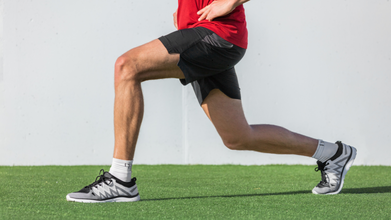- Health Conditions A-Z
- Health & Wellness
- Nutrition
- Fitness
- Health News
- Ayurveda
- Videos
- Medicine A-Z
- Parenting
- Web Stories
These Are The 5 Best And Worst US States For Mental Health Care

Credits: Canva
Your mental health and the care that you get may depend on the state you are in. For instance, if you are in Vermont, you are in good shape, but if you are in Texas, not so much. This is the second year that Texas topped the list of worst states due to having a large population of uninsured adults with mental illness. As per Forbes Advisor Health Insurance, seven data points were analysed to reveal the worst states for mental health care.
Out of the 10 worst US states for mental health care are located in the South, whereas 5 out of the 10 best US states are located in the Northeast.
Experts note that mental health care is also influenced by a person's beliefs and their place of residence. This is why urban and northern states have more positive overall mental health.
Which Are The 5 Best And Worst States?
5 Worst States for Mental Health Care
- Texas
- Georgia
- Alabama
- Florida
- Mississippi
Best States for Mental Health Care
- Vermont
- Connecticut
- Rhode Island
- Pennsylvania
- Massachusetts
The disparities between the South and Northeast highlight the need for more investment and attention to mental health infrastructure.
Is There A Reason For Texas To Rank So Low?
This state has 21.4% uninsured adults, the second highest in the US. On average 75% of young people with depression in Texas, do not receive any mental health service, while 19.4% of youth with private insurance do not have the education about mental health problems.
Texas also has a limited mental health infrastructure ranked the third lowest in the number of treatment centres, with only 8.4 per 10,000 businesses. On average, 62.3% of adults with mental illness in Texas go untreated.
Why Vermont Ranked The Highest?
Vermont has good access to services, comprehensive insurance coverage and strong support for mental health initiatives. The state also has a well-developed mental health care system with 34 treatment centres per 10,000 businesses. The number of uninsured individuals is also low in Vermont, with just 6% of them, whereas more residents have health insurance that covers mental health services.
The state also has one of the lowest percentages of untreated mental illness, just 43%.
Stigma Around Mental Health
A 2024 Lancet study titled Structural stigma in mental illness found that structural stigma of mental health disease refers to the “inequitable deprioritization, devaluation, and othering of mental health and substance misuse health (compared with physical health)” in healthcare systems.
The study also notes that for the hospital emergency department, the patient-to-nurse ratio for physical health is 3:1, whereas for mental health patients, it is 6:1. The 2008 Mental Health Parity and Addiction Equity Act also requires health plans to provide physical and mental health benefits equality. However, the National Alliance of Mental Health points out that parity laws mean nothing if there is inadequacy with the provider and a lack of awareness.
What Mental Health Care Includes?
There are various ways one can access mental health care. This includes:
Talk therapy: this is general counselling, cognitive behavioral therapy and dialectal behavioral therapy.
Impatient hospitalization: this involves intensive mental health treatment, which could be voluntary or involuntary.
Partial hospitalization: it includes a structured program of psychiatric treatments during the day only.
Substance misuse treatment: it addresses drug and alcohol addiction.
Emergency psychiatric care: it is used as a crisis intervention, which may include self-harm or overdose treatment.
Medication coverage: this usually includes at least partial coverage of pharmaceutical treatment for mental health disorders.
We Asked Doctors If There Was Any Truth In The Claim That Stronger Thighs Make You Live Longer, Here's What We Found

Credits: Canva
Last week, Health and Me did a fact check, quoting previously done studies and citing other health experts on actor Ram Kapoor’s recent remarks about thigh strength and longevity. His remarks have sparked widespread curiosity. In a viral video, Kapoor claimed that stronger thigh muscles could help predict how long a person might live, even adding that older adults who fall and need a hip replacement often live only “five to six years” afterward.
While Health and Me did fact check, we decided to look deeper into it and ask doctors of what they think of this claim?
Read: Fact Check: Do Stronger Thigh Muscles Really Mean That You Live Longer?
Thigh Strength and Longevity: What Doctors Say
According to Dr. M S Somanna, Sr. Consultant, Joint Replacement & Arthroscopic Surgery, Aster CMI Hospital, Bangalore, there is some truth to the idea that thigh strength can reflect overall longevity, particularly in men. “Strong thigh muscles indicate better overall muscle mass, balance, and mobility,” he says. “These factors are important for preventing falls, fractures, and joint problems as people age.”
He adds that weak thigh muscles often signal lower physical activity and slower metabolism, both of which increase risks for conditions such as diabetes, heart disease, and bone loss. “Studies have shown that people with stronger leg muscles tend to live longer and stay independent for longer,” he says. “Simple exercises like walking, squats, and cycling can go a long way in maintaining thigh strength and improving joint health.”
Echoing this, Dr. Dheeraj Batheja, Consultant, Orthospine, Orthopaedics & Spine Surgery, Artemis Hospitals, agrees that strong legs are a good indicator of vitality. “Strength in the lower body shows how fit, energetic and balanced your metabolism is,” he explains. “Keeping your thigh muscles strong helps you stay balanced, move around, and remain independent as you get older.”
In other words, it’s not the size of the thigh that predicts lifespan, it’s what that strength represents: good muscle mass, stable balance, and cardiovascular resilience.
The “5–6 Years After Hip Replacement” Claim: Fact or Fear Mongering?
Kapoor’s claim that older adults who undergo hip replacement surgery live only five to six years afterward is an overstatement, experts say.
Dr. Batheja calls the statement “an oversimplification.” He explains, “Hip fractures in older adults are indeed serious and can increase the risk of death, especially within the first year. But the time someone lives after hip replacement varies widely depending on their overall health, pre-existing conditions, and recovery support. It is not scientifically proven that someone will live only five to six years.”
Dr. Somanna agrees. “While it’s true that hip fractures at 80 can seriously affect mobility and independence, many older patients recover well and live much longer with proper physiotherapy, nutrition, and care,” he says. “So, while the concern is valid, it sounds more like fear mongering than a medical fact.”
Do Thigh Muscles Matter More Than Any Other?
Both doctors emphasize that while the femur and thigh muscles are crucial for standing, walking, and balance, they don’t work alone. “Overall muscle and bone strength, including the back, hips, and core, are equally important for stability and healthy aging,” says Dr. Somanna. Dr. Batheja adds, “To live a long time, you need to keep your whole body strong and your bones dense, not just your thighs."
Fact Check: Do Stronger Thigh Muscles Really Mean That You Live Longer?

Credits: Canva
Thanks to social media, now every one is a fitness influencer. However, not everything people say on social media is true, nevertheless social media did benefit many, allowing easy access on health and fitness. But whatever we see on the platform must be always taken with a pinch of salt.
One such video which is trending is of actor Ram Kapoor, who once was 140kg and then went on to lose 55kgs in 18 months. He has, ever since become an inspiration for many to lose weight naturally. As per him, having two simple meals a day and intermittent fasting principles helped him. Now, as somebody who influence people achieving their own fitness goals, especially that he himself has experienced it, he does not shy away from talking about it.
Also Read: Is Huntington’s Disease Genetic? Here’s Everything You Should Know
In one such conversation, he reveals that people in the insurance industry hire insurance experts to predict the age of a person and when he is going to die. One such man is Gary Brecka, a human biologist, and expert in science of human performance. Kapoor says, "He has an 82% accurate record in predicting one's longevity, based on the last 5 years of their life history."
Kapoor also notes that now he uses this experience he has gained from insurance industry to help people lead a better and healthy life.
"Do you know how he correlates the age till one will live?" Kapoor asks, "Through your thigh muscles."
Kapoor says that the stronger your thigh muscle is, the longer you will live. "When you sit, you need this muscle to get up. In India, everyone makes an upper body, but you do not need biceps to stand up," he said.
"Secondly, when you are 80 years old, it is very easy to trip and fall and if your leg muscles are not strong, you will have to have a hip replacement surgery, which is the beginning of the end. The person who underwent that surgery could only live for 5 to 6 years more."
Are Thighs Really The Key Predictor Of Longevity?
This is not the first time someone is talking about how thighs can help someone predict their age of living. Simon Sinek, an American author, international speaker, and more, also seconds this theory.
"Historically, thighs are the most important muscle responsible for notion." However, he correlates it with friendship. He says before cars, if you had to go meet a friend you would take a train or walk, which will put your thigh muscles at work, this means you have friends and to meet them you are mobile, "which means you are more likely to live longer".
Is There Any Truth In This?
While stronger thigh muscles could be one of the key predictors, the reason is not because it means you have a friendship or that a hip replacement surgery would only let you live 5 to 6 years afterwards.
As per the Harvard Health Publishing, researchers found that people with big thighs had a lower risk of heart diseases and premature death than those with thick thighs.
Also Read: What Does Trump's Latest Health Checkup Reveal About Him?
The real reason is because stronger thigh muscles, or leg muscles reduce risk of all cause and heart-relate mortality. In men, specifically, it could predict the age for how long do they live, notes a 2011 study published in Author Manuscript. Strong thighs improve stability, reduce risk of falls. This also supports daily functional activities, which seems to have reduced as age progresses. Also subcutaneous fat in thighs can provide protective effects for bone and bone strength and cardiovascular health, also notes Dr Kunal Sood, MD, and double board certified anesthesiology and international pain medicine, based in Maryland, US.
Note: The information in this article is based solely on observations and insights from the referenced videos. It does not, in any way, claim to define or predict a specific lifespan for anyone.
Struggling with Irregular Periods? Try These 5 Yoga Poses to Regulate Your Menstrual Cycle

Credits: Canva
The fast-paced lives of women today, whether it’s school exams, college projects, work deadlines, or managing countless household chores can cause significant stress, leaving both the body and mind drained. Prolonged stress isn’t just exhausting, it can also affect physical health, mental well-being, and hormonal balance, which in turn can disrupt one of the key functions of the female body, which is the menstrual cycle.
Can Stress Disrupt Your Menstrual Cycle?
Medically known as menstruation, the menstrual cycle involves shedding the uterine lining (endometrium) through vaginal bleeding. Typically, cycles occur every 28 days, though slight variations are normal. However, gynecologists in India and across the globe are seeing an increasing number of women reporting irregular periods, a trend that is cause for concern.
Irregular cycles are generally defined as those occurring after gaps of more than 35 days or when the timing varies unpredictably each month. While irregular periods are common during teenage puberty or around menopause for women over 45, they can signal underlying issues in women in their twenties and thirties, requiring proper medical attention.
Other Factors That Can Lead To Irregular Menstrual Cycle
Beyond stress, other factors contributing to irregular periods include sudden weight changes, excessive exercise, emotional challenges, medication side effects, and chronic conditions like diabetes or hypertension. Timely medical care is essential because irregular cycles can sometimes indicate serious conditions, including polycystic ovarian syndrome (PCOS), endometriosis, or even cervical cancer. Symptoms often include heavy bleeding, spotting between periods, post-intercourse bleeding, menstrual bleeding in menopause, severe abdominal cramps, and extreme fatigue.
While medications and supplements can help balance hormones, Yoga, a centuries-old natural practice can complement medical treatment by promoting overall reproductive health and helping regulate menstrual cycles. Yoga combines stationary postures, stretching movements, and controlled breathing to reduce stress, relax the body, calm the mind, and support reproductive function. Below are some effective yoga poses to help regulate your cycle and enhance women’s health.
Yoga for Irregular Periods
Matsyasana (Fish Pose)
Lie flat on your back with arms under your hips, elbows close to the waist. Bend your legs into a cross-legged position with knees and thighs touching the floor. Inhale and gently lift your upper body and the back of your head, hold for a few breaths, then exhale and relax.
Dhanurasana (Bow Pose)
Lie face down with feet slightly apart and arms by your sides. Bend your legs and hold your ankles, lifting your chest and legs off the floor while inhaling. Hold as long as comfortable, then slowly lower back down.
Adho Mukha Svanasana (Downward-Facing Dog Pose)
Start on all fours, hands straight and head facing forward, knees bent, feet on the floor. Exhale and lift your hips, straightening your arms and forming a V-shape. Hold for a few breaths, then return to the starting position.
Malasana (Garland Pose)
Squat on the floor with heels flat, thighs wide, and feet close together. Exhale and fold forward, placing your torso between the thighs. Bring elbows to the inner thighs, applying gentle pressure, lift heels slightly, then return to a relaxed squat.
Ustrasana (Camel Pose)
Kneel with heels flat, hands on hips, keeping knees and shoulders aligned. Inhale and arch your back, holding your feet for balance. Stay for about a minute, then return slowly to upright. Alongside professional care, medications, and a healthy diet, daily yoga and meditation can help regulate menstrual cycles.
Stress, whether physical, mental, or emotional, can trigger irregular periods. Work pressure, household responsibilities, or personal challenges may create tension, anxiety, or panic, disrupting hormonal balance. Doctors advise women to step back from stressful situations, practice deep breathing, stay hydrated, and get enough sleep to restore calm and support healthy menstrual cycles.
© 2024 Bennett, Coleman & Company Limited

